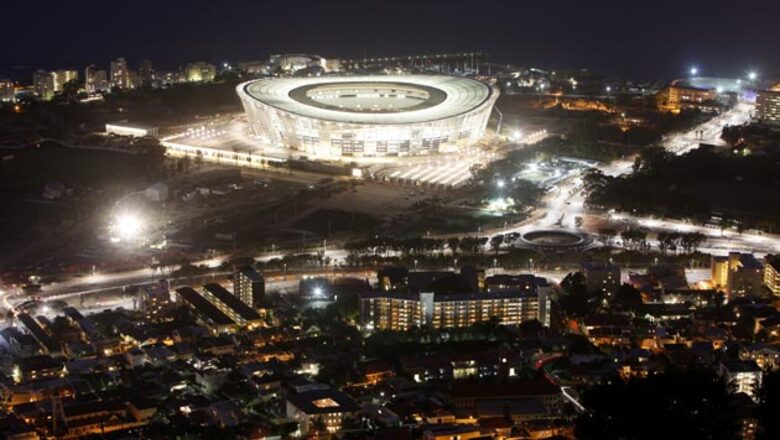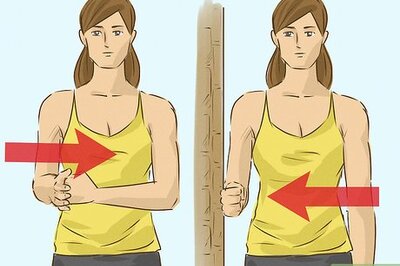
views
One of the most beautiful cities in South Africa provides an equally magnificent stadium ahead of the World Cup to be held in the country next year, and the Green Point Stadium will be one of the major venues for the 2010 spectacular, hosting a number of matches including a semi-final showdown.
The stadium has been built on the edge of the city centre in Cape Town and behind the famous V&A Waterfront, allowing easy access from the inner city, while placed only a few hundred metres away from the coastline.
The area surrounding the stadium is one of the most popular in the city, and the great 68 000 seat venue will only add to the area’s allure.
The design and construction of the roof is unique throughout the world. Its basic structure resembled a bicycle wheel, open in the middle. Some 72 cables linking the outer and inner rings of the circle were slowly tightened to raise the roof from ground level to its present height.
Another first for the roof is the use of 16mm thick panels of glass to cover and protect the spectators from strong winds and rain. All systems of the 68 000-seater have been tested and the brand new stadium is now ready to welcome the world to the greatest show on earth.
Facts
- Surface: Grass
- Capacity: 68 000
- 96,000 cubic metres of concrete were used
- The roof has a total weight of 4,700 tons
- Some 9,000 glass panels were used to cover 37,000 square metres of roof
- 500 toilets and 360 urinals
- 115 entry turnstiles
- 16 lifts
- More than 2,500 workers were employed on site during construction, and almost 1,200 artisans received training from the contractors
- The stadium is the only one in the world with a glass ceiling
- In case of an emergency, the stadium can be evacuated in fifteen minutes
History
The stadium replaces an 18 000 seat stadium. The previous stadium, which was demolished in 2007, was a multi-purpose stadium used mainly for football matches, and was the home ground of Santos Football Club and Ajax Cape Town.
Construction of the breathtaking Green Point Stadium, located on the Green Point Common between the twin icons of Table Mountain and Robben Island, began in March 2007.
In just 33 months, joint contractors Murray and Roberts and WBHO completed the massive project at a cost of R4.4-billion or approximately US$600-million.
The project architects were an association between GMP Architects of Germany and two local firms, Louis Karol and Associates and Point Architects.
Plus And Minuses
Plus
- The inward pitch of the roof and the use of the roof’s inner ring to house the 360 lights (instead of using high exterior masts) are both features that reduce the negative visual impact from outside.
- The stadium has 16mm thick panels of glass to cover and protect the spectators from strong winds and rain. This will let in the light while the ceiling panels underneath – made of woven PVC fabric - will soften the noise from within.
- According to the architects that designed the stadium, in case of an emergency the venue can be evacuated in 15 minutes.
- The design of the stadium means that spectators are always close to the game, with the cheapest seat in the venue still providing fans with a great view of the matches.
- The stadium is situation near the coastline, while also being within walking distance of various shopping and entertainment areas.
Minus
- The use of the stadium after the World Cup will be divided amongst various sports codes, as well as other venue uses such as for concerts and mass gatherings. This will be good for the city, but the condition of the pitch may suffer as a result.
- The existence of the solid bedrock just below the surface means that the stadium could not be sunk into the ground, and therefore had to be higher, and more expensive for the organizers.
- As the host city with the greatest distance apart from the other cities, Cape Town Stadium will require more time and money to access from the other venues.
Games To Be Played
Eight World Cup games will be played at the Cape Town Stadium, including one of the two semi-finals at the end of the tournament.
The second match of the tournament will kick off Cape Town Stadium’s part in the event, with four more group games taking place at the venue, before a Round of 16 match, a quarter-final encounter and finally a semi-final complete the schedule for the coastal host city.
















Comments
0 comment